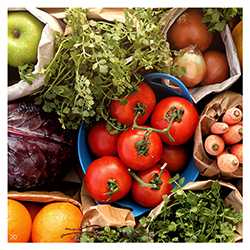NCEZID: Foodborne Disease (food poisoning)
CDC estimates that each year roughly 48 million people (1 in 6) gets sick from a foodborne illness, 128,000 are hospitalized, and 3,000 die. Many different disease-causing microbes, or pathogens, can contaminate foods, so there are many different foodborne infections.
According to CDC estimates, the most common foodborne illnesses are caused by norovirus and by the bacteria Campylobacter, Salmonella, and Clostridium perfringens. What foods are associated with foodborne illness?
- Fruits and vegetables consumed raw are a particular concern. Washing can decrease—but not eliminate—contamination.
- Raw meat and poultry, raw eggs, unpasteurized milk, and raw shellfish.
- Filter-feeding shellfish (like oysters) are especially likely to be contaminated with viruses and bacteria
- Foods that combine the products of many individual animals, such as bulk raw milk, pooled raw eggs, or ground beef, are particularly hazardous because a pathogen in one of the animals may contaminate the whole batch.
What We’re Doing
CDC provides the vital link between illness in people and the food safety systems of government agencies and food producers. We take action by:
- Collaborating at the federal level with the US Food and Drug Administration and the US Department of Agriculture’s Food Safety and Inspection Service. State and local health departments and the food industry also play critical roles in all aspects of food safety.
- Tracking the occurrence of foodborne illnesses.
- Facilitating and leading outbreak investigations.
- Managing the DNA fingerprinting network for foodborne illness-causing bacteria in all states to detect outbreaks.
- Using whole genome sequencing to show which bacterial strains are most alike genetically.
- Attributing illnesses to specific foods and settings.
- Targeting prevention measures to reduce illness and death
- Providing data and analyses to inform food safety action and policy.
Listeria, associated with soft cheeses, raw milk, and certain refrigerated foods, is a deadly foodborne bacteria. About 1 in 5 people who get sick from listeriosis die.
- Page last reviewed: August 28, 2017
- Page last updated: August 28, 2017
- Content source:
Centers for Disease Control and Prevention
National Center for Emerging and Zoonotic Infectious Diseases (NCEZID)


 ShareCompartir
ShareCompartir
